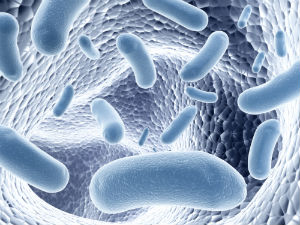How Colloidal Silver Combats Harmful Organisms |  |
| How Colloidal Silver Combats Harmful Organisms Posted: 17 Sep 2014 08:00 AM PDT  Two thousand years ago, the Greeks and Romans used silver containers to hold and protect perishable liquids against harmful organisms. Silver containers were used until the invention of refrigeration to protect food liquids — such as milk — from spoiling. Using silver in the medical setting came into practice about one hundred and fifty years ago as a means to protect against infection. It remained popular against harmful organisms until the advent of antibiotics.
While modern Western medicine may not currently promote silver to fight harmful organisms, modern opinion still doesn't change the fact that silver works as a powerful bacteria fighter. What is Colloidal Silver?Colloidal silver is a preparation of silver particles in a pure solution. These microscopic silver particles carry a positive ionic charge making them effective against harmful organisms. Colloidal silver is the most bioavailable and safest form of silver. Some silver products on the market that are lower quality can be ineffective and even contribute to argyria if consumed in excess. This is why it is so crucial to seek out a high-quality colloidal silver supplement made with pure silver particles. How is Silver Harmful to Harmful Organisms?When positive silver ions encounter harmful anaerobic organisms like single-celled bacteria and fungus, it binds to the cell wall. The silver ions then absorb into the organism. Once inside, it disrupts cellular function and neutralizes the organism. [1] The complete mechanism of this action remains to be determined. Silver appears to disrupt energy production within the cell of the bacteria. Additionally, silver may oxidize organisms, disrupt cellular respiration, and possibly shorten electrostatic fields natural to these single-celled organisms. Silver also inhibits parasite reproduction and function. While the precise mechanism — or mechanisms — continue to be explored, one fact remains: silver is effective in harming and neutralize dangerous organisms. How Effective is Colloidal Silver?A 1978 article published in Science Digest reported on clinical studies supporting silver as a potent killer of 650 live tested organisms. The research showed that silver was even successful against resistant strains. Research performed at UCLA Medical Labs verified these findings, documenting how colloidal silver was effective against a variety of live viruses. [2] Polish researchers conducted a recent study pitting colloidal silver against several common harmful organisms. These organisms included Staphylococcus aureus, Staphylococcus epidermidis, E. coli, and Pseudomonas aeruginosa. [3] The success of these tests relied on a colloidal silver product containing the smallest possible silver particles. To primitive organisms like these, colloidal silver remains a toxic killer as effective as common disinfectants. Although many organisms have adapted to resist antibiotics, silver's cellular disruption continues to remain effective against common damaging compounds. Fortunately, silver is nontoxic and shows no sign of microorganism resistance. Not All Silver is Created EqualAccording to a 1992 Italian study by the Institute of Microbiology, pure electro-colloidal silver worked up to 100 times better than all other forms of silver. Solutions with smaller particle sizes (.005 microns or smaller) allow for a wider distribution of silver particles. The silver particles must also carry a positive electrical charge, as is found in quality preparations of colloidal silver. When choosing a silver solution, the highest quality and purity are necessary for maximum effectiveness and safety. As with any product you ingest, the higher the quality, the better the results and the less likely the chance of side effects. Pure colloidal silver has never produced any side effects that can occur with the ingestion of large silver salts or silver particles. Argyria, or the blueing of the skin, can result from ingesting large silver particles. To avoid argyria, it is important that you choose a silver supplement with small silver particles. Also, be sure to take silver with the professional advice of a trusted physician. Are you a fan of colloidal silver? What have you noticed since taking it? Let us know your thoughts on this product in the comments! -Dr. Edward F. Group III, DC, ND, DACBN, DCBCN, DABFM References:
The post How Colloidal Silver Combats Harmful Organisms appeared first on Natural Health & Organic Living Blog. |
| You are subscribed to email updates from Natural Health & Organic Living Blog To stop receiving these emails, you may unsubscribe now. | Email delivery powered by Google |
| Google Inc., 20 West Kinzie, Chicago IL USA 60610 | |
No comments:
Post a Comment